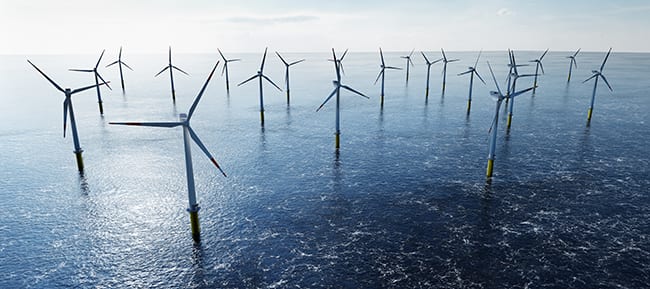It Is About Balance
On a healthy planet, all of Earth’s living and nonliving components function and interact in ways that maintain a dynamic balance, resilient and adaptive to fluctuations within the system. It is this balance that has allowed life to exist for billions of years. It is also what has allowed human existence and culture to thrive.
With the onset of the Industrial Revolution, the growth of the human population has exploded, and our use of natural resources has upset the balance. We are depleting the planet’s natural resources to an extent that ecological resilience is threatened. Environmental sustainability attempts to restore the integrity of the system.

bamboo bicycle 

sustainable wind farm on the ocean
Resource Consumption
There are some resources we use, such as trees or animals, that are considered renewable. However, we often use them at a rate that is faster than they can be replenished. If we use species to the point of extinction or decimate their habitats such that they cannot exist anymore, they are gone — forever. In addition, consuming resources without regard to ecological health can set in motion a chain of cascading events that results in the destruction of the systems we depend upon for survival.
Other resources are not renewable. Water is one of these. All the water on our planet now is all the water that will ever exist on the planet. What changes is the form, distribution and quality. Oil is another finite resource, for all intents and purposes. Oil is formed from the remains of dead and decaying plants through a process that takes millions of years.
Environmental Sustainability Practices
Engaging in efforts to ensure the health of Earth’s environment involves recognition of the interconnectedness of the various components that make up this planetary system. For instance, when we cut down a forest, it isn’t just the trees that are impacted. The animal habitat, the water cycle and the climate are also affected. Environmental sustainability practices seek to both indirectly and directly improve ecosystem health and resilience. We can see examples from several sectors of society, including agriculture, forestry and water use and management.
Agriculture
Sustainability in agriculture utilizes natural systems for food production, rather than the artificial chemicals used in conventional agriculture. Ecosystem health is key to success; good practices encourage biodiversity in the soil and in the crops.
Forestry
Much like food agriculture, sustainable forestry recognizes diversity and natural environmental processes as important components to forest health. Sustainable forest management practices seek to mimic those natural processes in harvesting and growing wood for human consumption.
Water Use and Management
Water is a finite resource on this planet, and our current consumption practices are altering water quality and the hydrological balance. Sustainability in water use and management seeks to balance the global societal need for water with the needs of the environment and the health of the water cycle.
Humans have been placing a heavy burden on this planet since the 1800s. The growth in our numbers has further stressed the system, leading to degraded and diminished environmental health. We rely on ecological services for our own survival. Thus, our future as a species depends upon our collective will to shift our perspectives and our practices to a focus on environmental sustainability in our use, consumption and management of socio-ecological resources.
What are your thoughts? We covered the basics now let us know how we did in the comments
